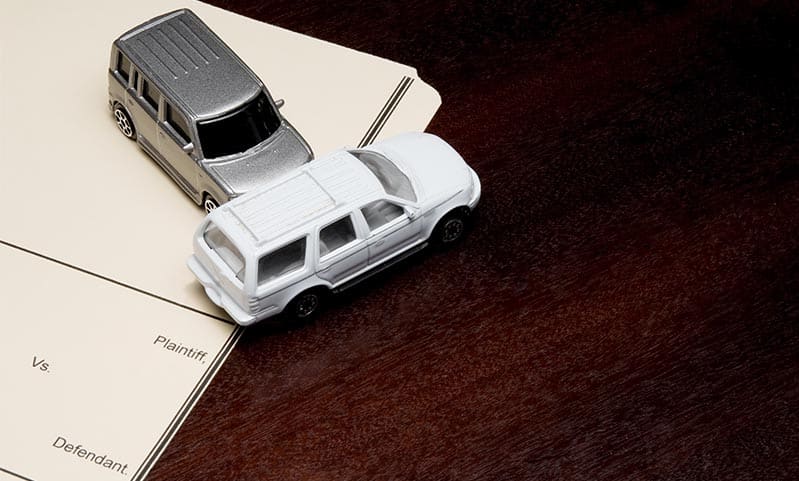The Personal Injury Timeline
Most accident claims do not go to court.
In fact, over 95 percent of these matters settle out of court. A few cases settle very quickly.
But for the most part, the settlement process takes time.
As with any other negotiations, it’s important to not resolve the claim too early.
If that happens, the victim might not receive a fair amount of compensation. And, these cases are almost impossible to reopen once they settle.
If you or a loved one sustained a serious personal injury, a New York personal injury attorney can usually obtain compensation for economic losses, such as medical bills, and noneconomic losses, such as pain and suffering.
Additional punitive damages might be available as well, in some cases.
Vehicle collisions make up most personal injury claims. So, for purposes of this post, we’ll primarily concentrate on this process.
The procedure (personal injury timeline) in other kinds of injury claims, such as falls and defective products, might be slightly different.
Initial Evaluation
When you meet with your attorney for an initial consultation, your lawyer needs to know everything about what happened. That includes the facts which support your claim, and the facts which do not support it.
An attorney will also want to know other things, such as the name of the other insurance company. Most insurance companies settle claims quickly, but others fight claims tooth and nail. That posture could affect a case’s settlement value, as outlined below.
Based on all this information, your attorney recommends a legal course of action. Usually, this action involves one of three theories:
- Ordinary Negligence: Essentially, negligence is a lack of care. Most drivers have a duty of reasonable care. They must avoid accidents when possible and obey the rules of the road. If they fail to do these things, they might be liable for damages.
- Negligence Per Se: Tortfeasors (negligent drivers) might be responsible for damages as a matter of law if they violate a safety law and that violation substantially causes injury. Some examples include speeding, making an illegal turn, and DUI.
- Strict Liability: Sometimes, a defective product, such as a defective tire, causes a crash. Typically, manufacturers are strictly liable for the injuries their defective products cause. There is no need to prove fault or negligence.
After the initial consultation, attorneys usually refer clients to doctors. It’s important to see the doctor straightaway. Otherwise, the insurance company might later claim the victim’s injuries must not have been very bad.
Medical Treatment
Evidence collection is probably the most important part of a personal injury claim, and medical treatment is probably the most important part of this process.
Many car crash injuries are difficult to diagnose and treat.
Whiplash is a good example.
The violent motion of a car crash usually causes this head and neck injury. Whiplash is a soft tissue wound which does not appear on MRIs and other standard diagnostic tests. Furthermore, unless a doctor treats this injury properly, it could cause permanent paralysis.
Once the medical treatment process is at least substantially complete, a New York personal injury attorney probably has a good idea of the damages involved. So, it’s possible to go on to the next step.
Demand Letter
As the name implies, this letter demands a sum of money in exchange for a liability waiver. If liability is reasonably clear, most insurance companies have a legal duty to settle the claim within a few weeks.
This demand usually includes all lost wages, medical bills, and other economic losses, as well as a reasonable amount of noneconomic losses.
To determine a “reasonable” amount, most New York personal injury attorneys multiply the economic losses by two, three, or four, depending on the facts of the case and some of the other aforementioned circumstances.
In most cases, there is at least some question about fault and liability. Insurance companies generally use these questions, no matter how significant they are, as an excuse to delay action. Therefore, it’s necessary to move on.
Filing a Legal Claim
The mere act of filing legal paperwork often convinces even the most reluctant insurance company to begin meaningful settlement negotiations.
Also, filing a legal claim preserves the victim’s rights. If a lawyer waits too long, the victim could lose any right to compensation.
At this point, many insurance companies file procedural motions seeking to throw the victim’s claim out of court.
If a New York personal injury attorneys have done their homework, these motions almost always fail.
Most judges do not make final decisions until they have more information. And, this information usually surfaces during the discovery phase.
Discovery
During this part of the personal injury timeline process, the parties exchange information about their claims and defenses. If there are any evidentiary gaps, this is the time when an attorney fills them in.
Insurance company lawyers also make discovery requests. Typically, victims must submit to medical examinations and give their depositions.
The court supervises this process. Most judges have very little tolerance for insurance company lawyers who make frivolous requests. If any disputes arise, the judge acts as a referee.
Resolution
During the personal injury timeline, most claims settle during mediation.
In this alternative dispute resolution forum, the parties meet with a neutral mediator. This person is usually an unaffiliated New York personal injury attorney.
The mediator talks to both sides and tries to forge a settlement. If both sides negotiate in good faith, mediation is usually successful.
Every personal injury case is different, but most follow the same general outline. For a free consultation with an experienced New York personal injury attorney, contact Napoli Shkolnik, PLLC. Home and hospital visits are available.
